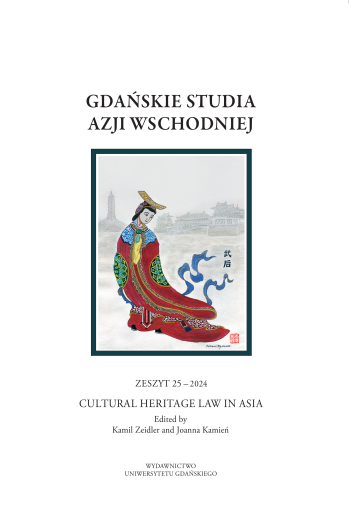Legal framework on heritage protection in India
Legal framework on heritage protection in India
Author(s): Debarati PalSubject(s): Law, Constitution, Jurisprudence, Criminal Law, Civil Law, Public Law
Published by: Wydawnictwo Uniwersytetu Jagiellońskiego
Keywords: heritage protection; India; judicial decision
Summary/Abstract: The article describes the national and municipal legislations on built and living heritage, antiquities and art treasures and explores the national framework for conserving Intangible Cultural Heritage in India. It maps the transcendence from the pre-independence Acts to the post-independence legislation and amendments. The roles and responsibilities of the stakeholders, including the community were examined.The text serves as a comprehensive guide to the constitutional background of the Ancient Monuments and Archaeological Sites and Remains Act 1904, the Ancient Monuments and Archaeological Sites and Remains Act 1958, and the National Policy for Conservation of the Ancient Monuments, Archaeological Sites and Remains, 2014. The text also examines the roles and responsibilities of various bodies, such as State Heritage Boards, Heritage Development Authorities and Councils, in conserving ancient monuments, archaeological sites, and remains. It also highlights the functional interface of these bodies with the Municipal Development Authority and Municipal Corporation under the Town and Country Planning Acts, which play a crucial role in implementing these policies. Moreover, the text delves into the impact of the Supreme Court’s judicial decisions on the legislative framework, providing a real-world context and making the text more engaging by illustrating how the law is applied in practice.Alternatively, in the executive domain, the role of the Central Government, National Monuments Authority, Archaeological Survey of India (ASI) and Indian Trust for Architectural and Cultural Heritage (INTACH) is discussed to calibrate the notions of inclusivity and community participation. Under the tangible category, the movable heritage properties posited under the Antiquities and Art Treasures Act of 1972 are also examined.In the realm of Intangible cultural heritage, the article explores the role of the Sangeet Natak Akademi in granting protection and inventorising the Intangible Cultural Heritage of India.
Journal: Gdańskie Studia Azji Wschodniej
- Issue Year: 2024
- Issue No: 25
- Page Range: 157 - 172
- Page Count: 16
- Language: English

